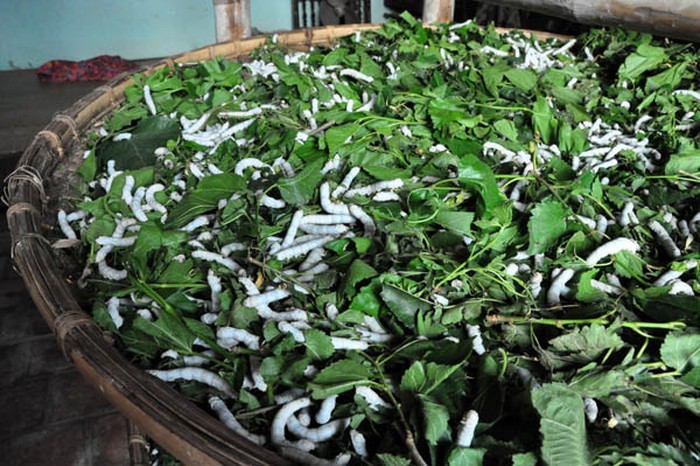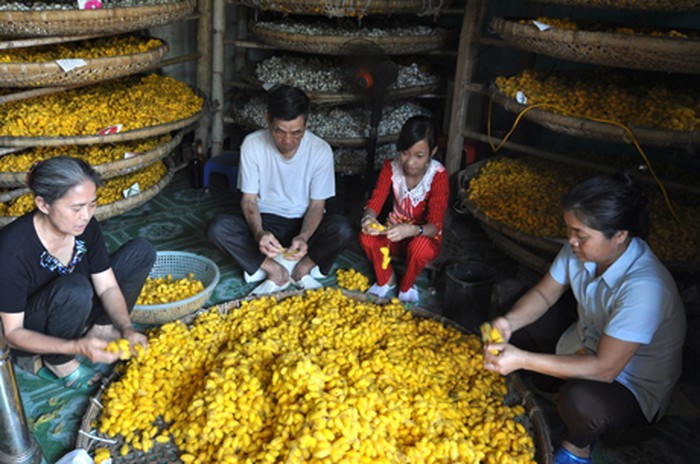(VOVWORLD) - Mulberries have been grown in Vietnam for hundreds of years in rural areas like Thieu Hoa district in Thanh Hoa province. After fading for a time, mulberry farming and silkworm raising have revived and, thanks to new techniques, are producing higher incomes for thousands of people.

Mulberries have been grown hundreds of years in rural Vietnam (Photo: baomoi.com)
|
Thieu Hoa is a flat district between the Chu River and part of the Ma River. Every year the land is covered with fresh alluvial soil, making it highly fertile and suitable for growing mulberries – the preferred food of silkworms.
The trade is profitable because of low investment cost and rapid return of investment capital. It takes just 25 days to produce one generation of silkworms. 1,000 households in the district are now engaged in raising silkworms.
The trade can take advantage of part-time workers of any age or physical condition to reduce production costs.
 Silkworms release silk cords to become cocoons (Photo: baomoi.com) Silkworms release silk cords to become cocoons (Photo: baomoi.com) |
Mulberry farming and silkworm raising provides silk fiber to the textile industry as well as other raw materials used in pharmaceuticals, cosmetics, food, paper, and fertilizer.
Le The Ky, an officer of Thieu Hoa district, said: “We have planned a village on about 29,000 square meters for a silkworm production model. The model will employ between 300 and 400 workers and produce about 30% of the locality’s income.”
Le Dinh Dung of Thieu Do commune, who has been involved in the trade for years, said his craft village has thrived in recent years. He belongs to a cooperative that has been using new seedlings. Profitability has tripled.
“In recent years, the productivity of cross-bred mulberries has tripled that of traditional seedlings. We harvested 300 kilos per month with the old mulberry seedlings but the new variety produces 900 kilos,” Dung added.
 Silk buds (Photo: baomoi.com) Silk buds (Photo: baomoi.com) |
More than 2,500 households are now engaged in traditional crafts in Thieu Hoa district, employing 6,200 people and giving them an average income of 1,400 USD per year. The yearly production value is estimated to be more than 9 million USD.
To further develop local traditional crafts, the Thieu Hoa administration has helped enterprises build brands to increase the competitiveness of their products in the market.
Hong Do-branded silk of Thiệu Đô commune has been recognized by the National Office of Intellectual Property of Vietnam. The district People's Committee has invited experts from the Center for Silkworm Research to teach local farmers new techniques for growing mulberries and raising silkworms.